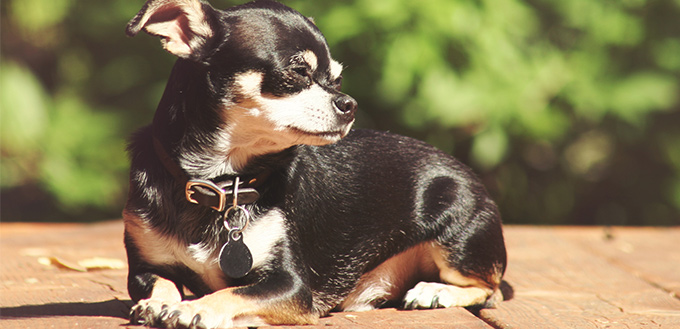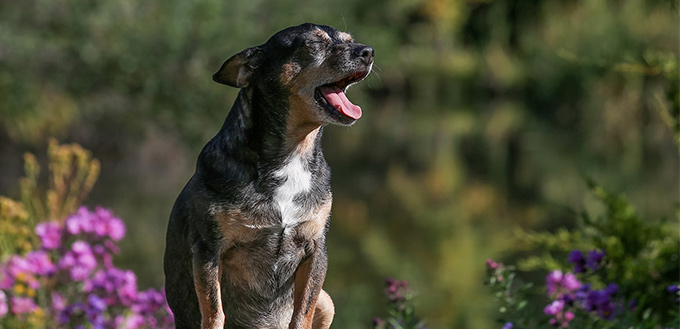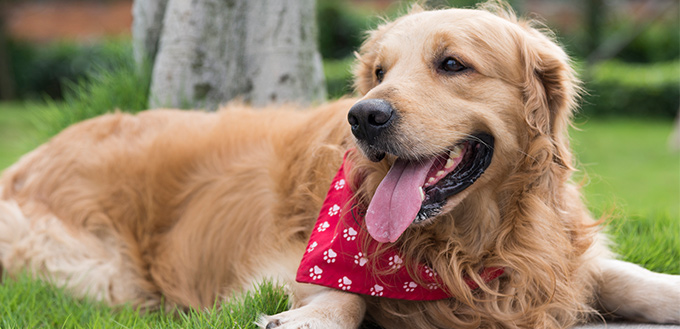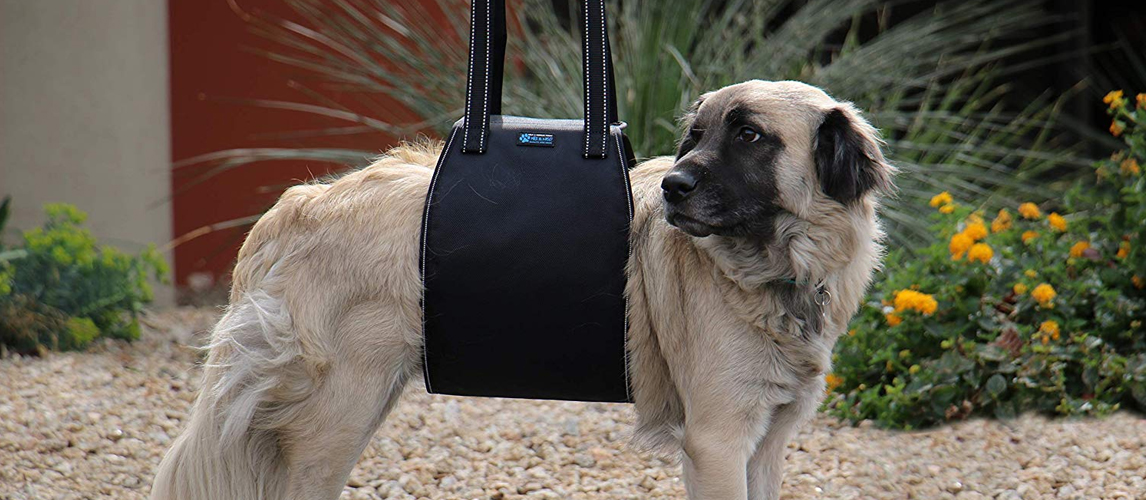Neutering or castration is generally recommended to address a variety of male canine behavioral problems such as territorial markings, aggressive tendencies, frequent wandering, and dominant behavior, among others. Castrating your male dog also helps reduce the risk of testicular cancer, prostate problems, and even perianal fistulas as well as a few others. While your dog will be in the best possible hands before and after the surgical procedure, you’re typically on your own when it comes to caring for your pet right after the surgery. For most first-time pet parents this can be nerve-wracking. Don’t fret, though, as we’ve collected a handful of aftercare tips that you can observe and implement on your recently-neutered hound.
Make Your Pet as Comfortable as Possible Right after Surgery
Complete bed rest for the first 24 to 48 hours is often necessary to help your dog heal a lot faster. One of the best things you can do is to make sure that your pet is able to lie comfortably on a dog bed that will not only support its weight, but also reduce pressure points on certain sections of its body such as bony prominences. Since your dog is going to be immobile for a while, prolonged lying down in a particular position can increase the risk of developing pressure sores especially in areas of its body where the bones are a lot closer to the skin. Getting a dog bed that is designed for orthopedic purposes should come in handy.
Check out our guide on the Best Orthopedic Dog Beds.
Additionally, it is important to place your pet’s dog bed in an area that is well ventilated but free from any distractions including noise and other pets. Noise can agitate the sensory organs of your dog and can lead to stress. This is especially true if the effects of anesthesia are still present. Planning your activities on your dog can also help by reducing the frequency of activities. Your dog should be left undisturbed, but you should still keep a watchful eye on it.

Wait until the Effects of Anesthesia has Worn Off Before Feeding Your Pet
Dogs that are neutered are typically sedated and given anesthetic agents as well as muscle relaxants. They are also not given food or water for several hours before the surgery such that you can expect your pet to feel quite hungry afterward. However, the effects of the various drugs used during the surgery can also reduce gastric motility while also numbing the gag reflex. It is imperative to wait for the effects of anesthesia to wear off before you start feeding your dog.
By the time your pet is ready to feed you can give half the amount of its usual meal. For example, if it is able to consume 2 cups of dog food per meal, then you can start off with 1 cup. Ideally, wet or canned dog food that contains high-quality animal proteins should be given as the softer consistency of such dog foods is a lot easier to take for a recuperating dog. This minimizes the energy required for chewing which is quite substantial if you’re going to give dry dog food. Water should be made available all the time. If your pet cannot tolerate its dog food, you can always give protein-rich, high-quality dog treats.
Your dog’s appetite should return within the first 24 to 48 hours. If 48 hours have lapsed and your dog still refuses to eat its dog food, call your veterinarian immediately.
Watch for Signs of Possible Surgical Complications
There are many possible complications of surgery that may present especially in the first 24 hours. For example, lethargy or weakness is very common more as a direct result of the anesthesia and muscle relaxants and compounded by not eating the night before the surgery. Vomiting and diarrhoea can be quite common, too because of temporary changes in the function of the gastrointestinal tract.
If you see these symptoms in the first 24 hours, you should not be alarmed as these are perfectly normal. However, if you see these signs in their most extreme it usually warrants a closer look by your veterinarian. If these symptoms persist well into the second day or 48 hours after the surgery, it is often wise to call your veterinarian.
Know also that your pet may experience minor coughing episodes usually as an effect of throat irritation when a breathing tube was inserted down your pet’s tube to aid in its breathing while undergoing surgery. Coughing typically lasts a few days and should resolve on its own without medications.
Get Your Dog an Elizabethan Collar or Dog Cone
You should do everything you can to protect the site of the surgical incision. And this includes protecting it from the innate need of your dog to lick it or even chew on the site in an effort to relieve the accompanying symptoms. It is for this reason that you should get an Elizabethan collar, e-collar, or dog cone to put around your pet’s neck to help prevent it from biting or licking its surgical wound. A dog cone is just like an inverted lamp shade, although some pet parents joke that it looks more like a pet radar dish or a speaker because of its shape.
It is important to put the dog cone on your pet as soon as it arrives home. If your vet did not give you a dog cone to bring home, you can easily buy one from a pet store. You can get one with a stiff collar. But if you want to help your pet get better access to its dog food and water, you’d be better off with a softer version. Dog cones should be worn for a minimum of 8 days or until the surgical wound has completely healed. This is to make sure that the sutures are kept in place and that infection is effectively prevented.
Related Post: Best Dog Cones
Don’t take the dog cone off too soon especially when the surgical wound is already beginning to heal. During this time your dog will feel very itchy at the region of the surgical incision and it will want to lick, bite, or chew on it. The dog cone will help protect the surgical wound so that it heals properly.

Make Sure to Check the Surgical Incision Site at Least Twice a Day
Your dog’s surgical wounds will slowly heal as days pass. It is critical to have an idea of what your dog’s incision site looks like so that you will have a basis for determining whether its condition is improving or not. You need to check the site of the surgical incision for any abnormal redness or swelling or even the presence of discharge especially surrounding the incision. In the first 48 to 72 hours after surgery, these signs may be noticeable. However, you should see incremental improvements as days go by. If not, it is best to inform your vet if no signs of improvement are noted. Moreover, if you notice that the swelling is actually increasing in size or that the discharge has not decreased, you should call your vet.
In checking the incision site, be careful when removing the gauze pad. Make sure you wash your hands thoroughly before handling the wound dressing to help prevent contamination. If you notice the incision to be open, notify your veterinarian immediately. He may direct you to bring your pet to the clinic to have the incision re-sutured.
Administer Medications for Dogs If Necessary
Most veterinarians will give or prescribe analgesics to help in the management of pain especially in the first few days after surgery. These analgesics should be given to your dog in the exact same manner that your vet has directed you to. It is also important to learn about the different side effects of such medications as well as the signs that you have to watch for that will warrant the bringing of the pet to the vet.
Related Post: Best Dog Pill Shooter
Some vets can also give your dog prophylactic antibiotics just to guard against possible infection. You should understand that your dog’s immune system is not in its top condition for a few days after neutering. This can increase your pet’s risk of developing infections. Having the correct antibiotics can help lessen such a risk. It is also important to minimize exposing your dog to potential sources of infections. If you have other pets in the house that are sick, it is wise to separate them because of the compromised immune system of your neutered dog.
Understand that these medications require a prescription from your vet. You should never give your dog analgesic or antibiotics that your vet doesn’t know about. Also, you should never give medications intended for humans to your dog.
Minimize Your Dog’s Activities for About a Week
Surgical wounds take a much faster time to heal than other types of wound. However, it is crucial to limit the physical activities of your pet for at least a week to make sure that the tissues where the incision has been made have completely healed. The first 7 to 10 days are very important to ensuring that your pet is able to fully recover from its surgery. Physical activities that put a strain on the pelvic region of your pet can impede successful healing. As such it is important to consider the activities that your pet can engage in the first week or so.
Alternatively, you can purchase a dog wheelchair for your pet. These contraptions can take the pressure off the back of your pet while allowing them to still enjoy walking with you. Dog wheelchairs are typically indicated in dogs that have undergone surgery of the back and legs so that these regions will be stabilized while allowing your pet to exercise and prevent losing the integrity, tone, and strength of its muscles. These contraptions are also perfect for dogs with hind limb arthritis and paralysis. But since we’re talking about your recently neutered dog, a dog wheelchair can remove the strain placed on the surgical incision site by the dog’s movements.
When you do decide to take your dog for a short walk, make sure that it will be on a leash. This is true even if you’ll be walking on a fenced park or yard. You should still limit its movements so as not to put a strain on its healing surgical wound.

No Jumping and Running Please
As already mentioned, any kind of wound requires time to heal properly. As a general rule, your dog should not be allowed to run, roughhouse, or even to jump for at least 2 weeks after being neutered. This is to help ensure the wound heals properly; lest, you spend another trip to the vet to address another problem.
Jumping and running require the more vigorous movements of your dog’s limbs. The tissues in its hind limbs can pull on the muscle tissues surrounding the incision site. This pulling pressure can break the just-established tissue linkages within the wound itself. Instead of faster healing, your dog may have to be put on an extended rest.
It is also a good idea to prevent other dogs or any other pet from interacting with your neutered dog, at least for the time being. You can put it inside its crate if you have plenty of other pets in your household. Just make sure that its crate is comfy enough so that it will also not feel as if it is being caged needlessly.
Related Post: Best Dog Crates
Slowly Incorporate Return-to-Normal Activities
Once the surgical wound has started to heal you can begin planning increasing your dog’s physical activities. This should be done slowly, methodically, and gradually. For example, you can start off by going on short 5-minute walks for about several days before adding 3 to 5 minutes for another set of several days. Within the first 2 weeks there should be no roughhousing, jumping, or running. It’s best to keep this in mind.
Review your pet’s daily routine and check which ones you can re-introduce first. Always go for activities that do not put unnecessary strain on the surgical site. Start with lighter activities, working your way towards the more physically strenuous ones in a span of several weeks. Again, it is critical to allow the surgical wound to heal completely before your pet can resume its full activities.
Don’t Give Your Dog a Bath Until About 10 Days After Surgery
Veterinarians strongly advise against bathing your pet for the first 10 days after surgery so as not to introduce microorganisms into the still-fresh wounds. While it is easy to say that bathing should actually help control microorganisms by removing these germs from the skin, it actually creates a moist environment upon which bacteria and other microorganisms can thrive.
Additionally, skin that has been soaked wet typically softens the skin and the various tissues underneath. What happens is that the wound incision site takes a much longer time to close and heal. Because the skin tissues are generally softer when wet, it makes it a lot easier for germs such as bacteria and other microorganisms to break through and cause superficial infections at first. If this is not corrected or if you missed the initial signs of an infection, it can spread to the blood.
On that note, it is also often advised not to get the surgical incision or its surrounding areas wet. Keep this in mind.
Return to Your Vet for a Follow-up Checkup or to Have Your Pet’s Sutures Removed
If your pet’s surgical incision is healing in the expected amount of time, there really is no need to return to your veterinarian for a follow-up checkup. However, you will still need to go to your vet to have the sutures removed especially if the sutures used during the surgery are not the kind that get naturally absorbed or dissolved by the dog’s body. The good news is that your veterinarian will inform you when to return your dog for a quick evaluation of the outcomes of the procedure or to address other potential problems that may arise.
It is important to remember that if you notice anything unusual about the recovery of your just-neutered dog – increased swelling or swelling that doesn’t subside, persistent pain and redness, and persistent discharges, among other things – will warrant a trip or at least a call to your vet. It is better to address any issue that may arise during this period so that more appropriate and more definitive measures can be initiated.
Having your dog castrated or neutered can bring a host of improvements not only in its health but also on its behavior. However, in order for you to obtain such benefits it is important to provide the most appropriate care for your dog especially during the first few weeks after the surgery. Your dog needs your utmost and unconditional support at this point in its life. With these tips, you’ll feel more empowered than ever to care for your pet after neutering.
Sources:
- Dr. Jennifer Coates, Create Your Home Kit for Neuter and Spay Recovery for Dogs, PetMD
- Amy Quinton, When Should You Neuter Your Dog to Avoid Health Risks?, UC Davis School of Veterinary Medicine
- After Surgery: How to Care for Your Pet, American Society for the Prevention of Cruelty to Animals






